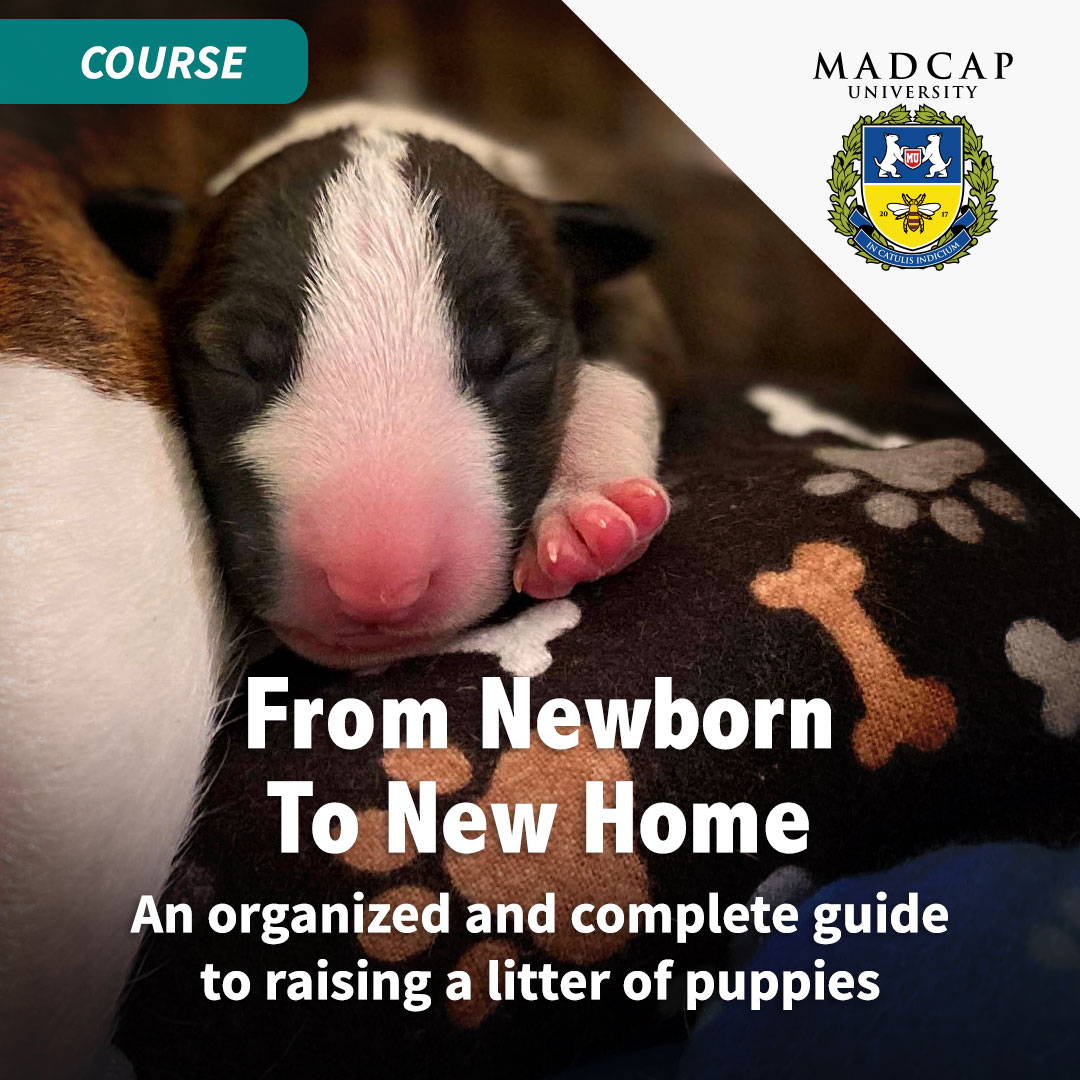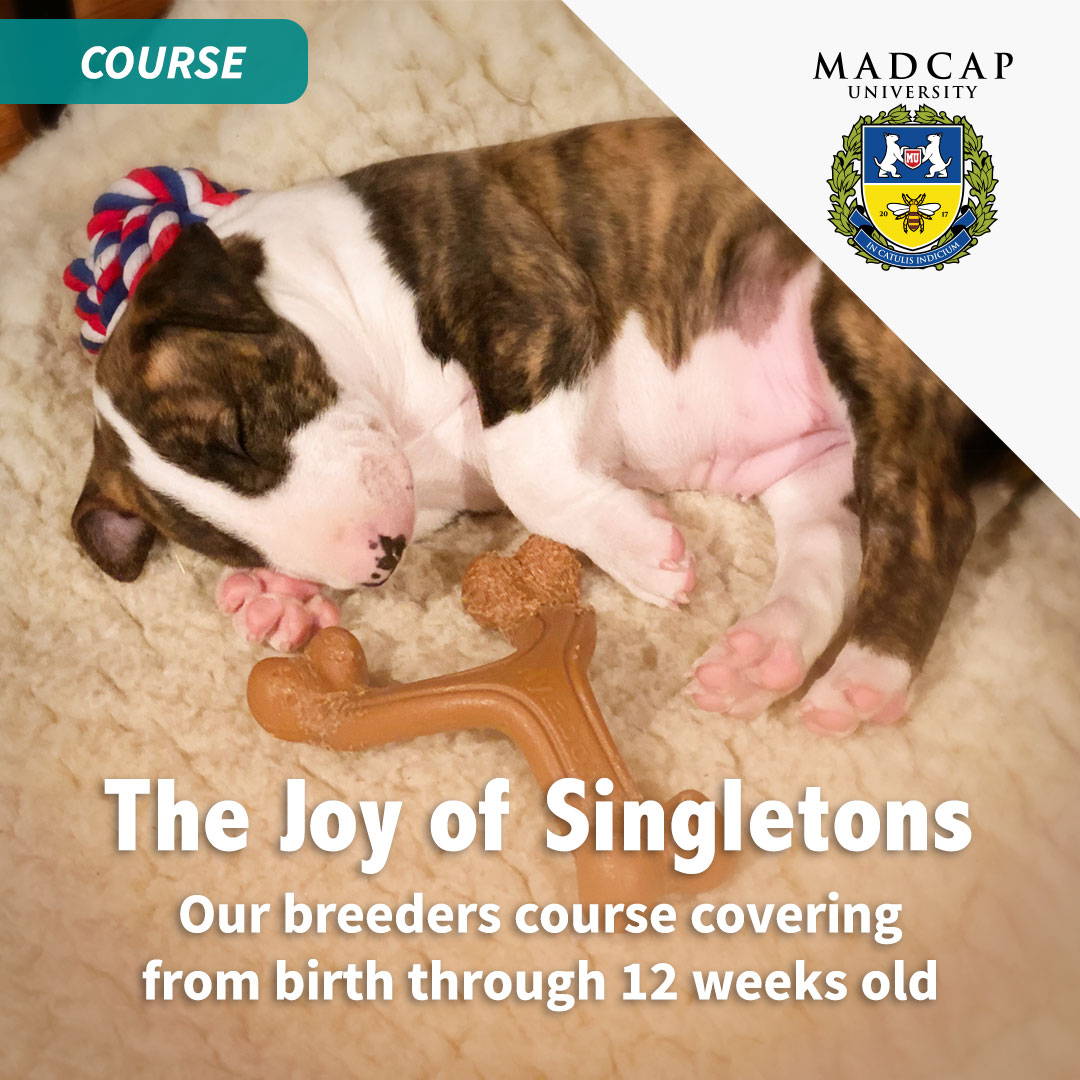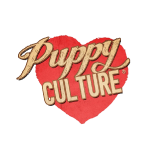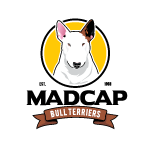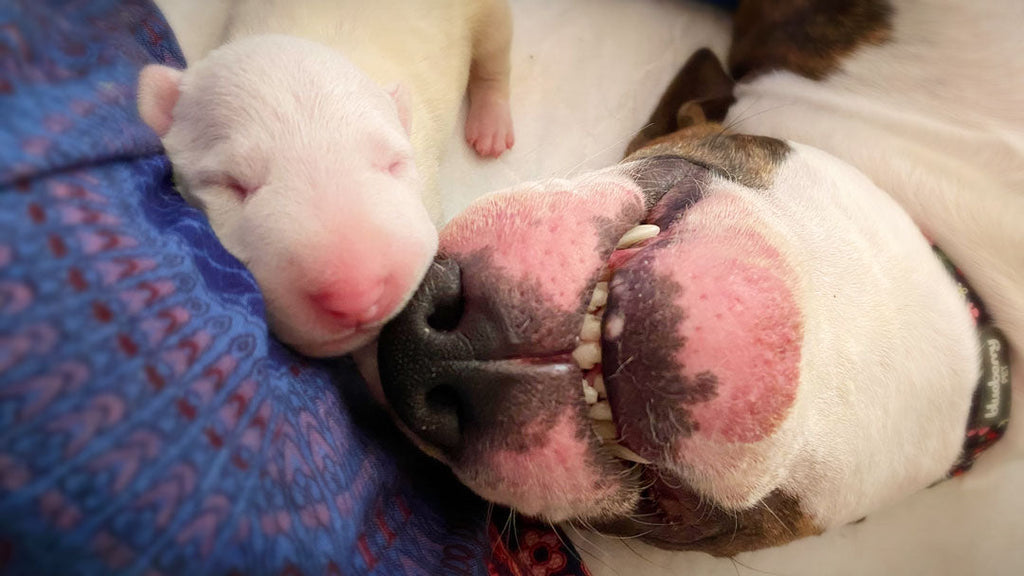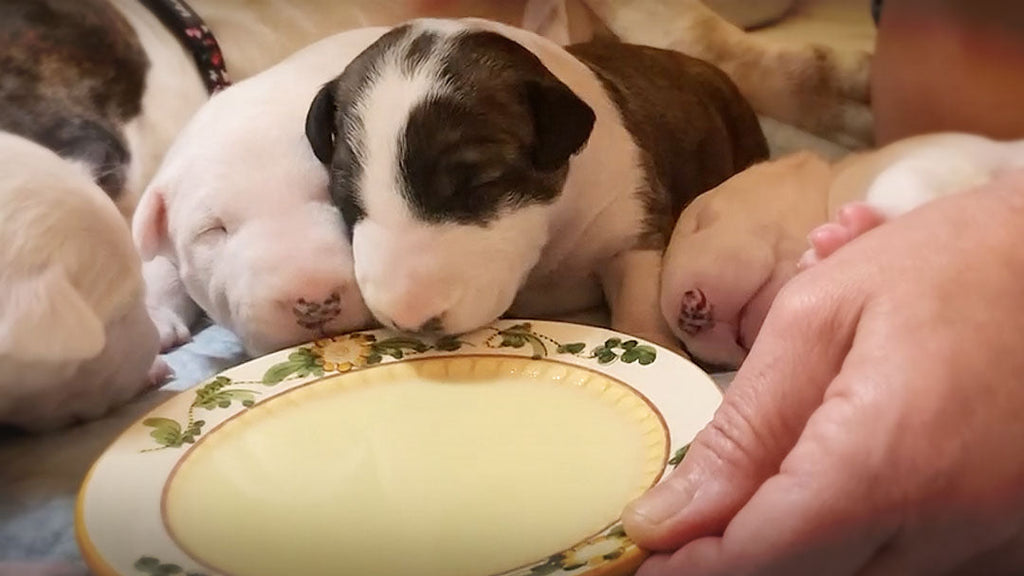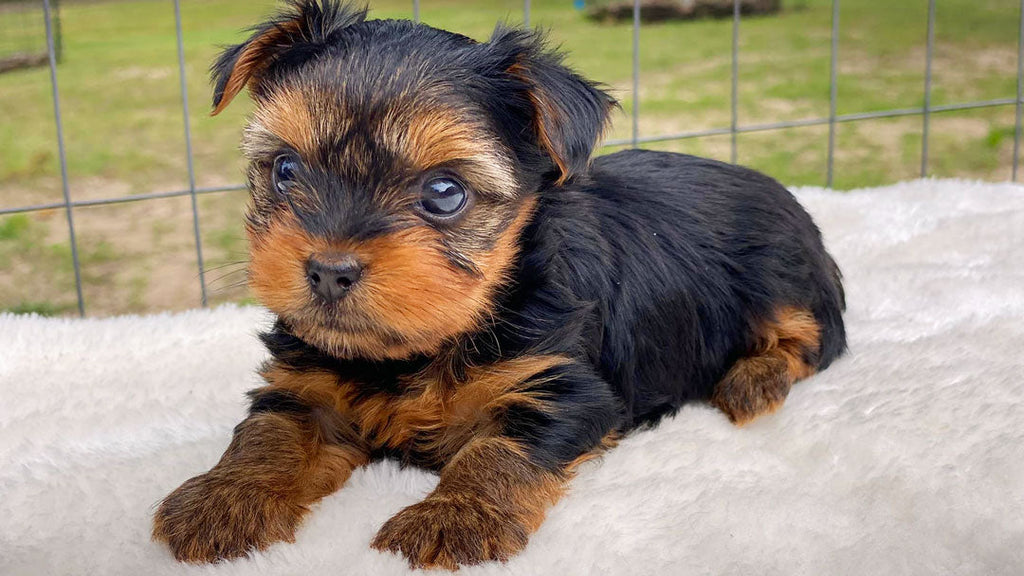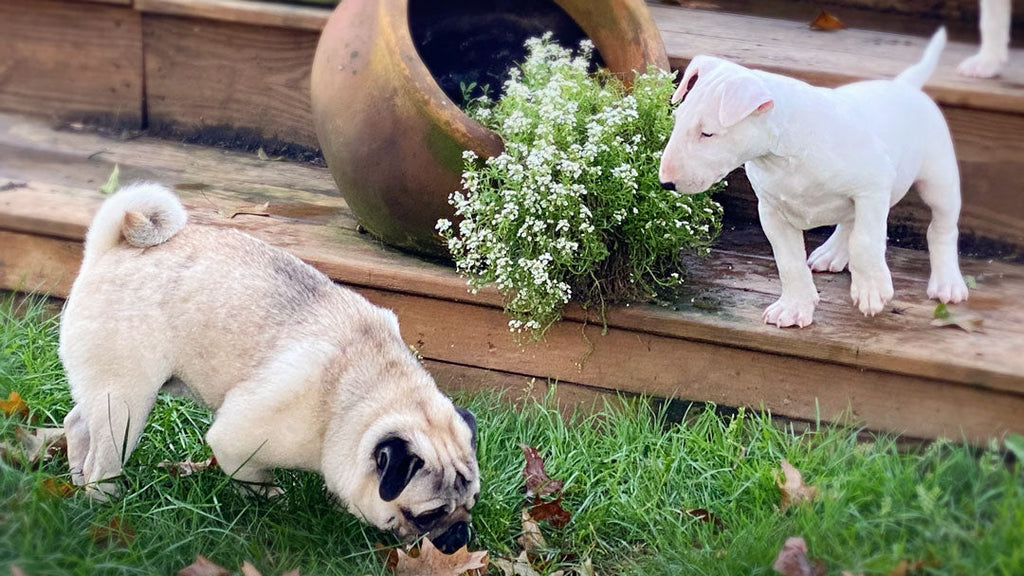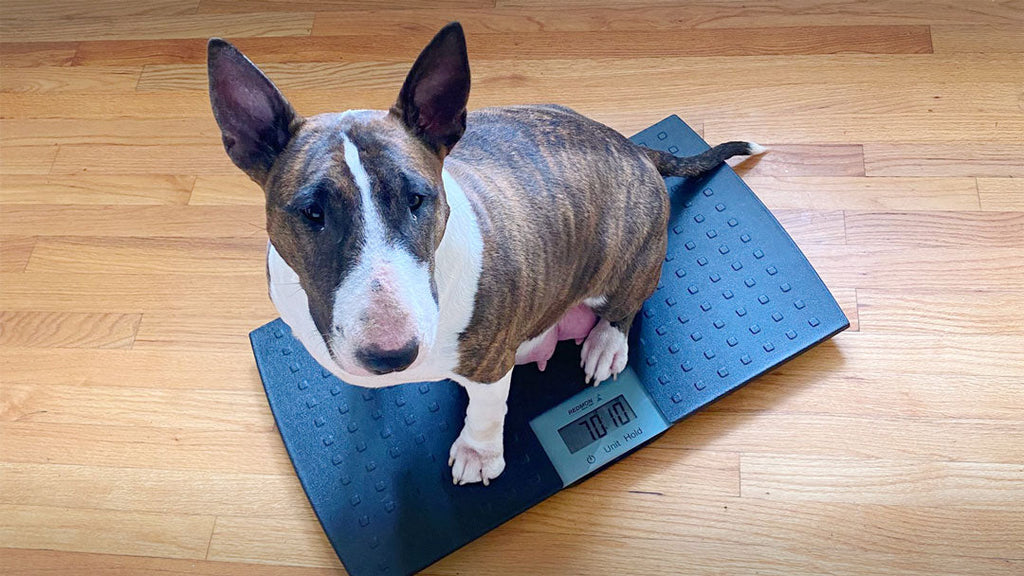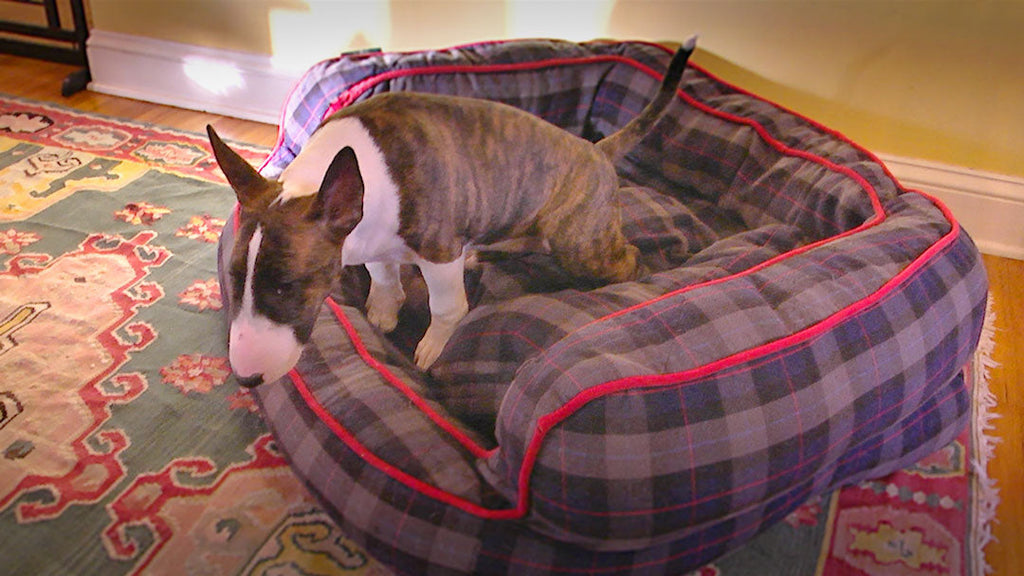Aaaaand They're Off!
Socialization and the Race Against Nature
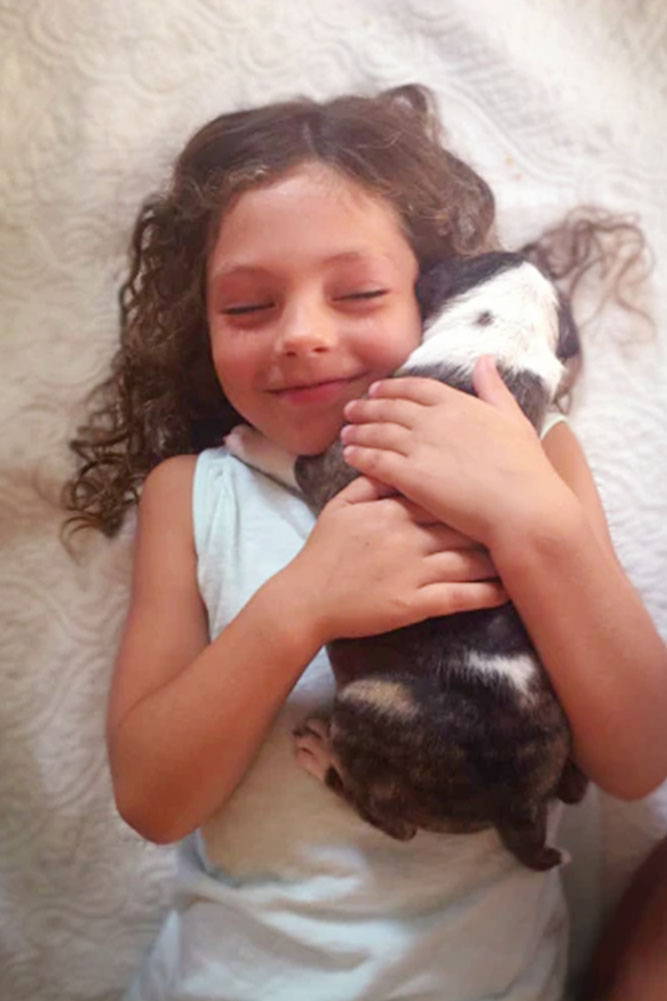
Sonya and Bikini Bob, sharing a moment.
The third week in the puppies' lives marks a big shift here at Madcap - we're entering the puppies' critical socialization period, and now the real fun begins.
Things are going to begin flying fast and furious at us as far as developmental periods and windows of opportunity go, and we're thankful that we mapped out a plan from the time we confirmed Pippi's pregnancy. The next nine weeks will be the most powerful ones in the puppies' lives and what we choose to do or not do during this period can completely change the outcome for their futures. Getting all the bases covered in a timely fashion and scheduling all the activities and visits the puppies will need is a much bigger job than most new breeders anticipate!
Why do I call this a "race against nature?" Because when you meet a "great" dog, one that's never aggressive, calm in public, friendly to strangers, gives up their food and possessions willingly, a fun companion that you can take anywhere and do anything with, that is directly in opposition to a dog's default genetic programming. People often think there is something "wrong" with an aggressive or fearful dog, when in fact that's normal - you have to do some pretty strong interventions in the first 12 weeks of the puppy's life in order to shape the kind of dog you would want to live with.
Why should this be so? We go into this in depth in Puppy Culture, but suffice it to say this is an adaptive evolutionary strategy tied to the mobility of the puppy. Puppies don't have the mobility to travel too far from the protection of their family before they are 8 weeks old, so it stands to reason they should trust everything they meet. By 8-12 weeks old, they have the wherewithal to wander off and get into trouble - it's a very good thing, from a "survival in the wild" point of view, that they should mistrust and fear stuff they encounter at that point. Bobcats, high and unstable surfaces, bodies of water - the world is full of dangerous stuff. In the wild, fear of the unknown is an excellent adaptive strategy. It's not so good when your dog goes to your daughter's soccer game and perceives the bleachers as monsters and the other children as a threat...
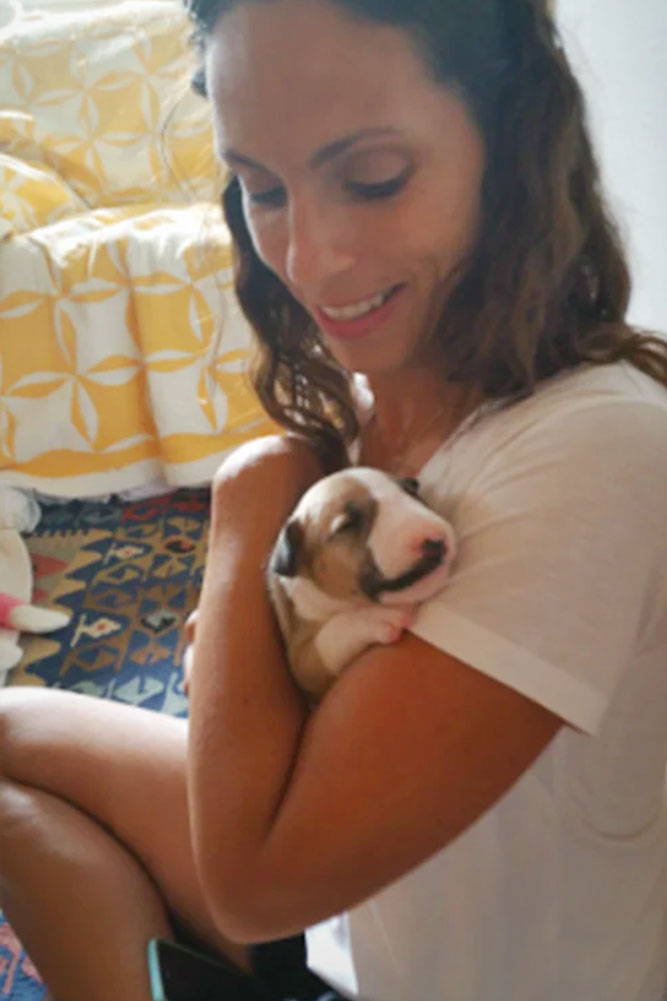
Luigi Meatballs, soaking up the love with Sonya's mom, Linda. It would hardly be useful for this puppy to be afraid of things, because he really can't run away or defend himself. His evolutionary strategy is literally to be so cute and trusting that we immediately want to protect him.
So it's a "race against nature" because the puppies' biological clocks are ticking and that window of opportunity is closing a little more each day. Contrary to what you might read on the internet, you don't have until four or five months to get this socialization work done - a great deal of the most important and irreplaceable socialization experiences should take place when the puppy is still with the breeder. Sure if important things were missed by the breeder, you can still try to make up for it later, but it's a long hard slog up a steep hill, and the hill gets steeper and steeper every day after 12 weeks old.
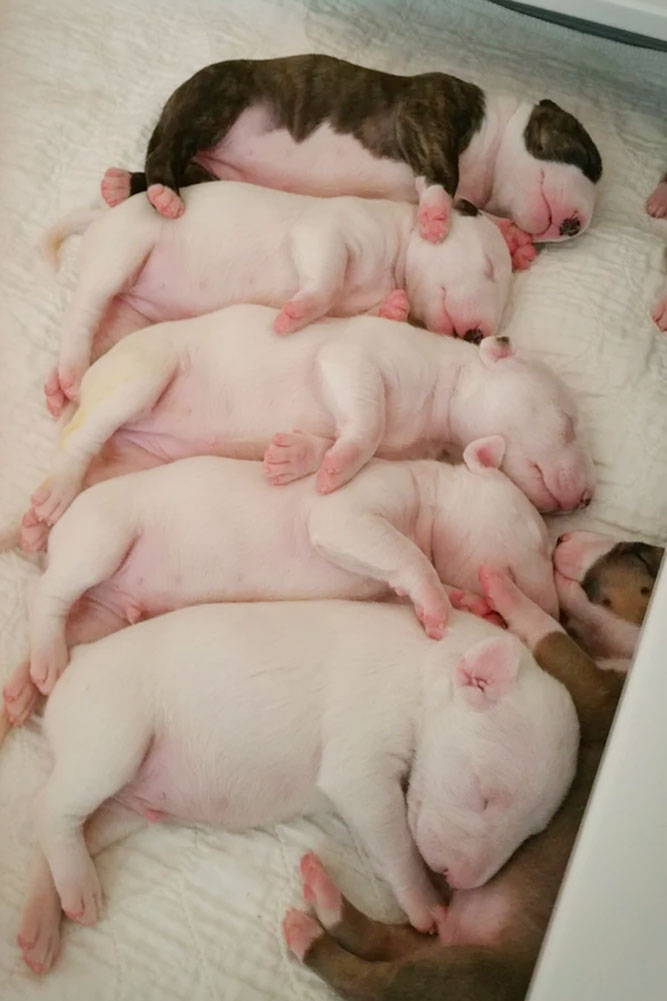
I know, I know, people will tell you that the socialization window is more flexible, but in my experience with touching hundreds and hundred of puppies, there is a vast difference between working with an 11 week old puppy and a 14 week old puppy. Your experience may be different, but that is mine. And that doesn't even take into account all the protocols that should have been done during early developmental periods - protocols which can never be done effectively at any later point in the puppy's life. There are windows of opportunity that close as early as five weeks old. I hate to sound like a broken record but that's why we made Puppy Culture - it's five plus hours on this topic so if you're interested in learning more, it's all in there.
So, our core task as breeders is to teach puppies to be enrichment/novelty seekers, and to trust that the world holds good things for them. To that end, in this first week of the socialization period we begin inviting potential puppy owners over to meet us and help begin the socialization process. We also introduce at least one new toy, visual object, or experience to the puppies each day during this week. In practice, we usually are introducing several new things to the puppies each day, but we make a note of at least one new thing just to keep the record straight, because it's easy to get mixed up when you're so tired!
Here are some of the puppies having a time with Tuesday's enrichment item - it's an awesome toy I picked up at Tractor Supply. I love it because it has a furry outside crinkly part, plus a squeaker and a bungee inside.
It's important to take note that we take the enrichment items out of the whelping box after the puppies fall asleep. I don't believe in cluttering up up the puppies' environment with a lot of stuff that's going to get dirty anyway. They're learning how to walk now, so they need unobstructed space in which to move. Also, in my observation, the most productive enrichment at this stage involves the presentation of novel objects so you get the startle/recover/curiosity/exploration cycle. Of course, as they get a few days older and move into their weaning pen, they will have toys and objects to play with all the time. But that's a different class of enrichment and is not as effective (in my observation) for building enrichment seeking/emotional stability.
New toys are great "novel" items - we buys them by the box full from Pet Edge. It's amazing how you can put three toys down, one of which is new, and the puppies will swarm to the new one. But something as basic as being taken out to walk on the living room rug for a minute is equally novel and good. Just a sheet of foil in the bottom of the whelping box for a minute or two, or adding a potty area with pet litter, are new experiences that trigger the startle/recover/curiosity/exploration cycle very nicely.
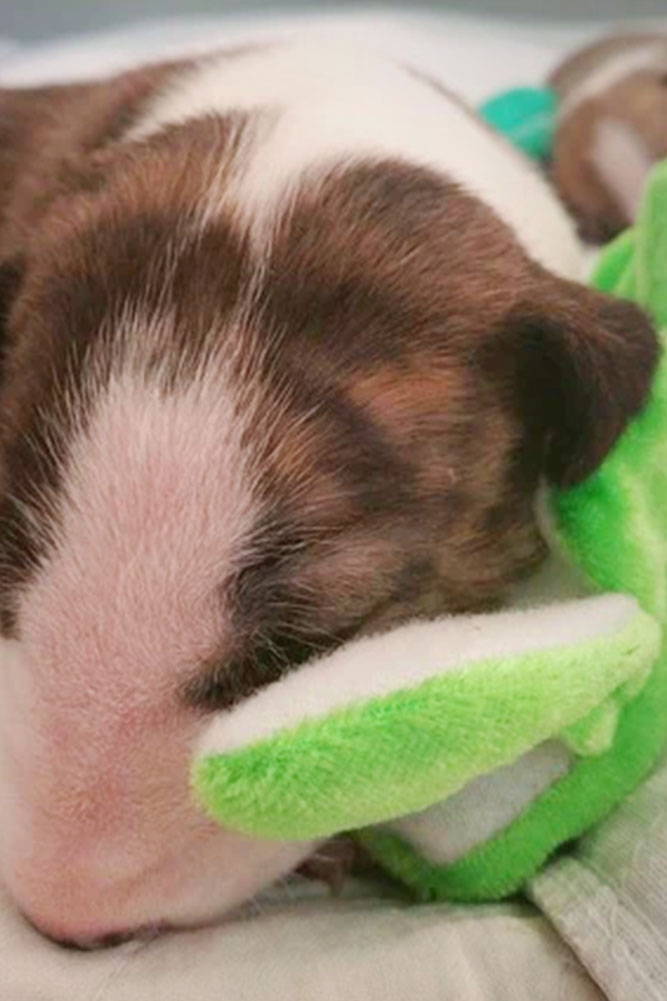
OK, sometimes we leave the toys in when the scene is just too cute to break up....
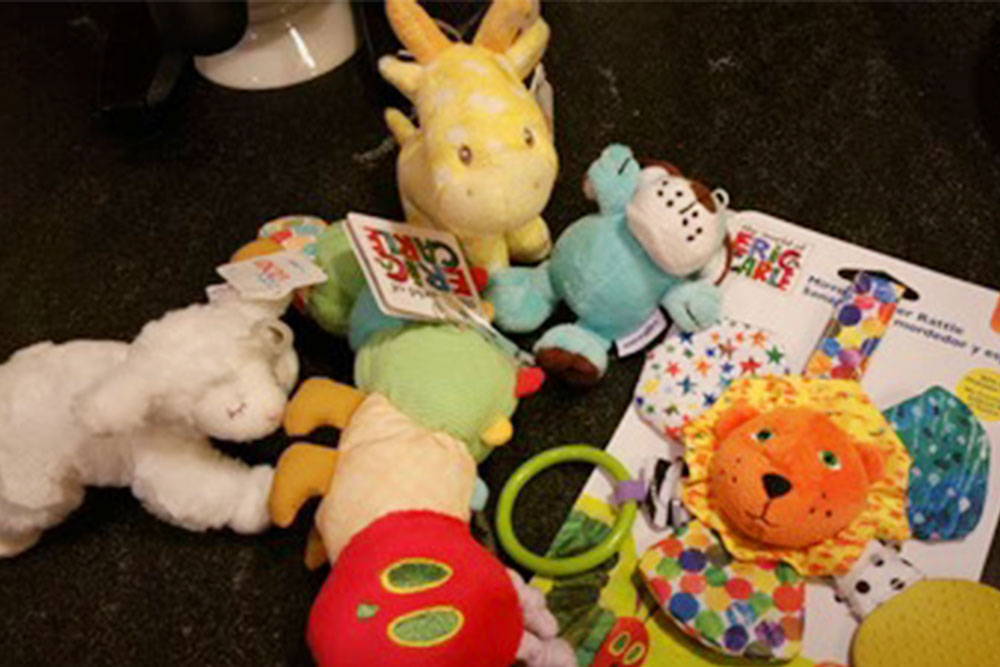
Most puppy toys are more for an 8 week old puppy than a three week old infant - Babies R Us has great tiny toys for infant puppies. Pricey, yes. If you have the time and stamina you can haunt baby consignment shops and find tiny toys there sometimes, too.
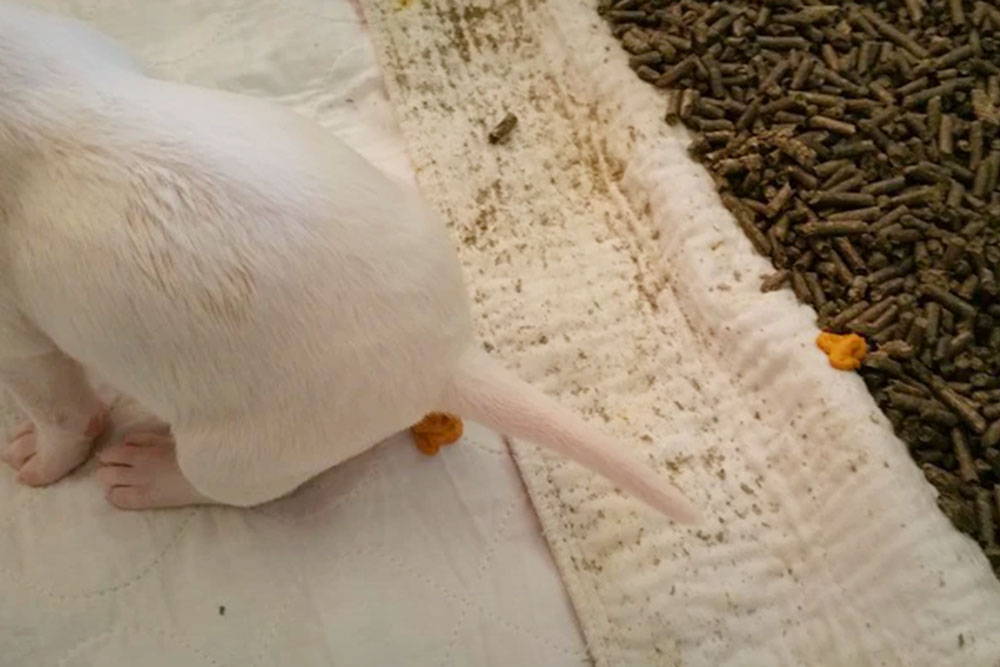
Yes, adding a potty box counts as a "new thing." Don't be surprised if they don't quite get it at first - at least this puppy is demonstrating that he has the right concept, even if his execution needs a little polishing...
Breeders tend to get "Gadget Envy" when it comes to enrichment items. They see all the cool "stuff" that other breeders are using, and they feel like they might be falling behind or letting their puppies down in some way. Not to worry. I freely admit that I love scanning our Puppy Culture Discussion Group to see what kind of new and cool enrichment items people have dreamed up, (and yes, I spend stupid amounts of money on stuff). But I want to put your mind at rest on this point - it's not rocket science, and many great enrichment items cost nothing and don't have to be fancy.
Remember, these little lives have been on this earth for about 21 days - something as simple as a crinkly bag of baby wipes is like a trip to Paris for them.
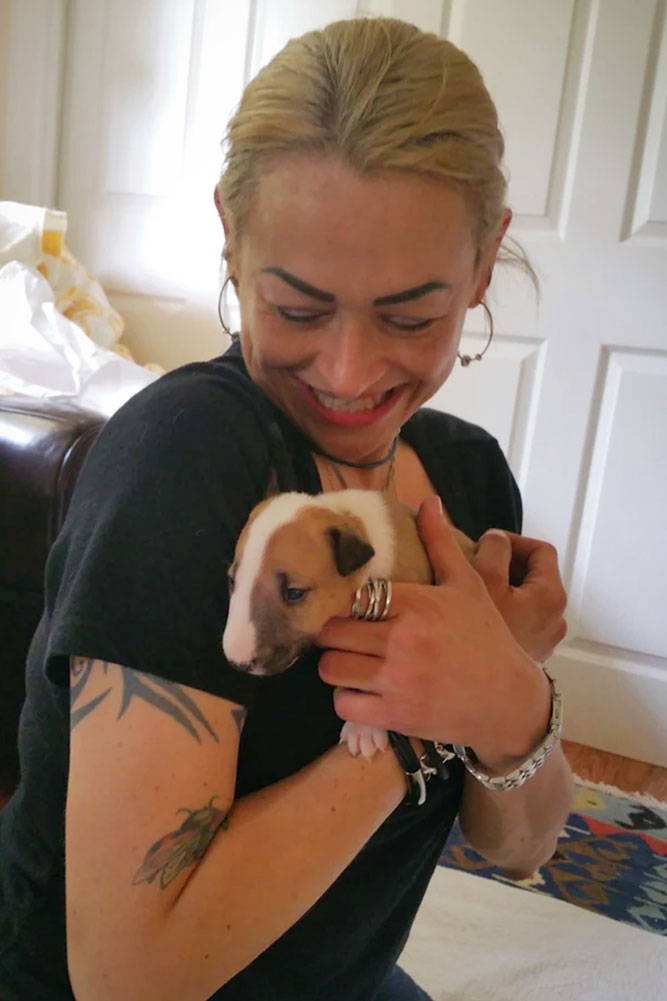
Our puppies will meet four different families this week. Laurie is an old "virtual" friend whom I've know for almost a decade - so wonderful to finally meet her in person (and possibly place a puppy with her!) We can now check off the box next to "People With Tattoos and Cool Jewelry" on our socialization list.
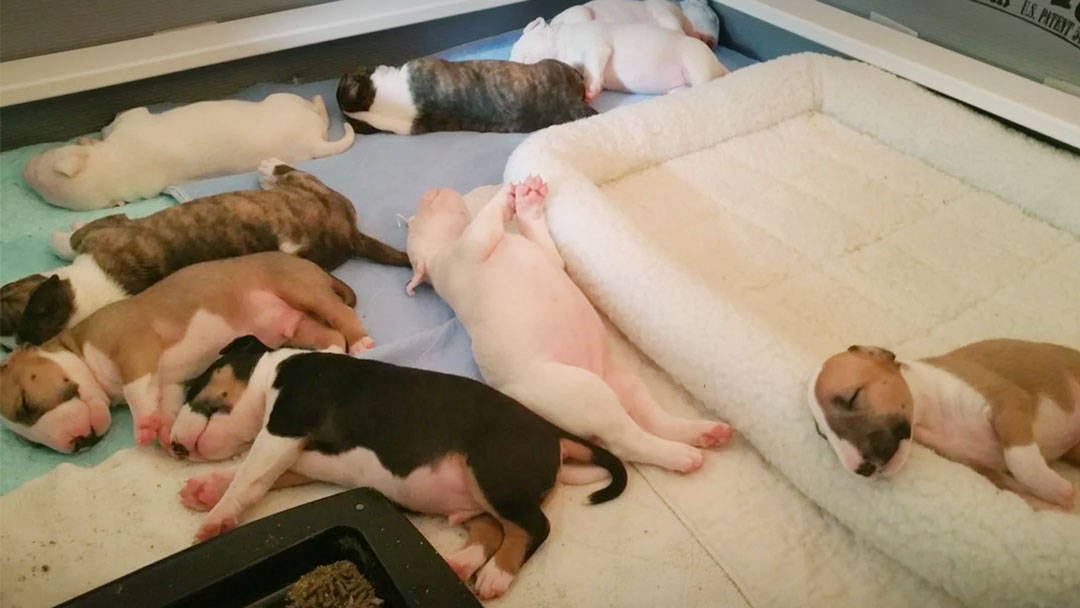
The aftermath
The puppies can hear now and sound becomes a very important tool in shaping their personalities. This is a deep subject that could be a whole article, but I'll distill it down - there are three basic areas of importance when it comes to sound at this age. Our goal is to balance these three types of sounds to create emotional stability and low stress levels:
Ambient Environmental "Centering" sounds: A recent study has shown that classical music has a de-stressing effect on shelter dogs, and hard rock music has the opposite effect. So we play a soft bed of classical music in the puppy room all day. Here are some of the Pandora stations we like - this is what we play for the puppies almost all day:
Bucky Pizzarelli & Frank Vignola
(OK not classical but honestly so awesome it has to be good for the puppies ;o))
Stephane Grappelli
(ditto above)
Sharp, sudden, sounds during the 3-4 week period to encourage the startle recovery cycle. This is to build emotional resilience as we discuss inPuppy Culture
"Habituation" noises, both live and potentially recorded, of things like show noise, babies crying, other animals noises, machinery, engines, etc.
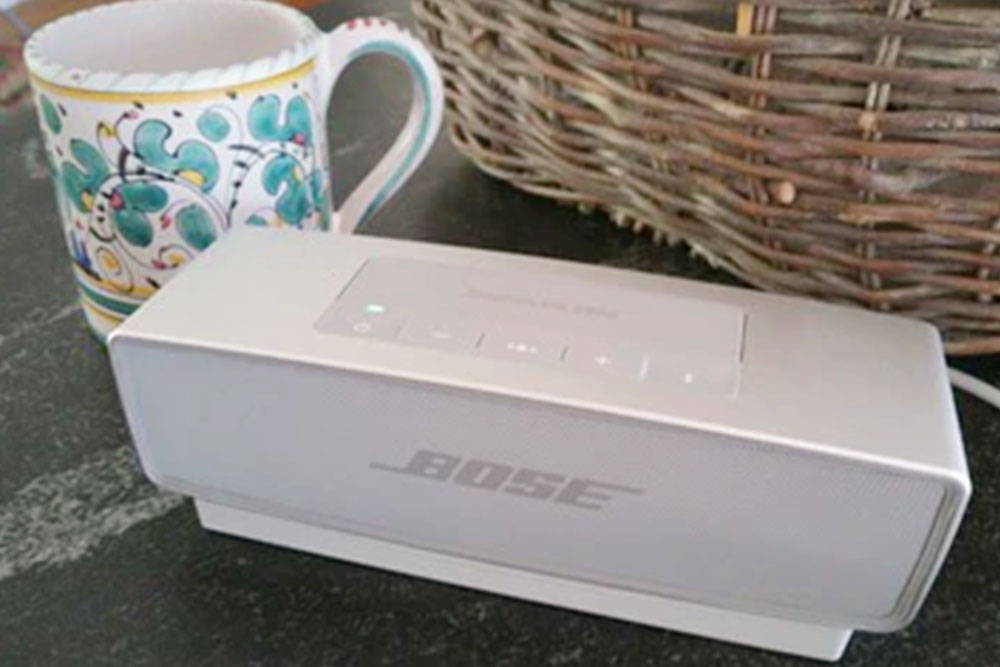
One of the absolute best $199 you'll ever spend. Perfect for the puppy room, where space and surface area is often at a premium. Wireless, light, easily pairs with your computer via bluetooth. Sound is AMAZING. No I do not get a spiff from BOSE ;o).
One last word about music. Far be it for me to dictate your musical tastes, but just be aware that the music you play for your puppies can have a lasting effect on his adult personality - look at what happened to one of my friends' puppies when she played Jethro Tull for the litter...
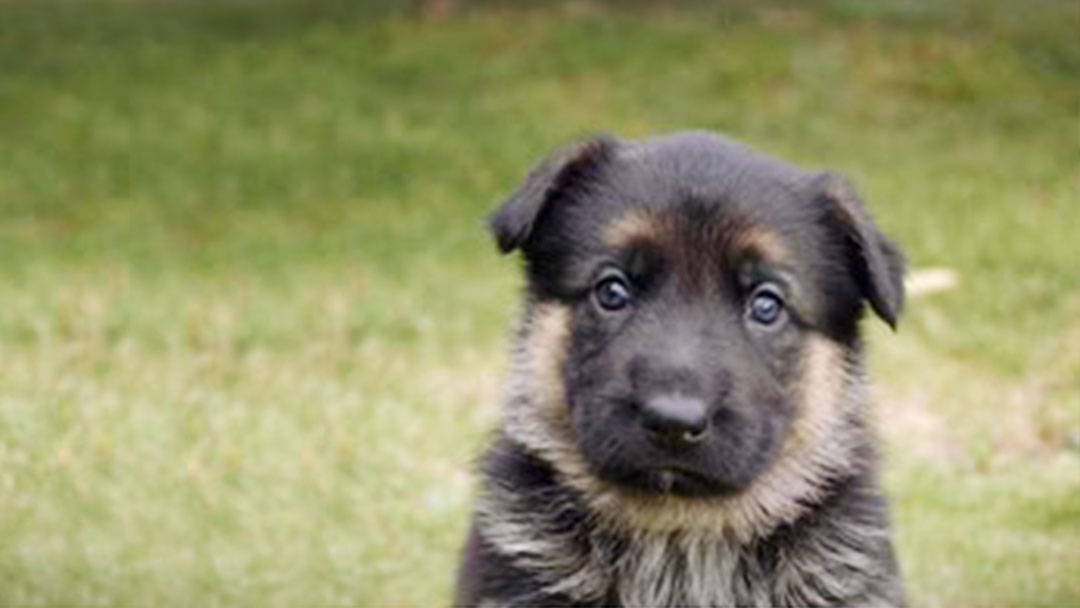
Normal German Shepherd puppy
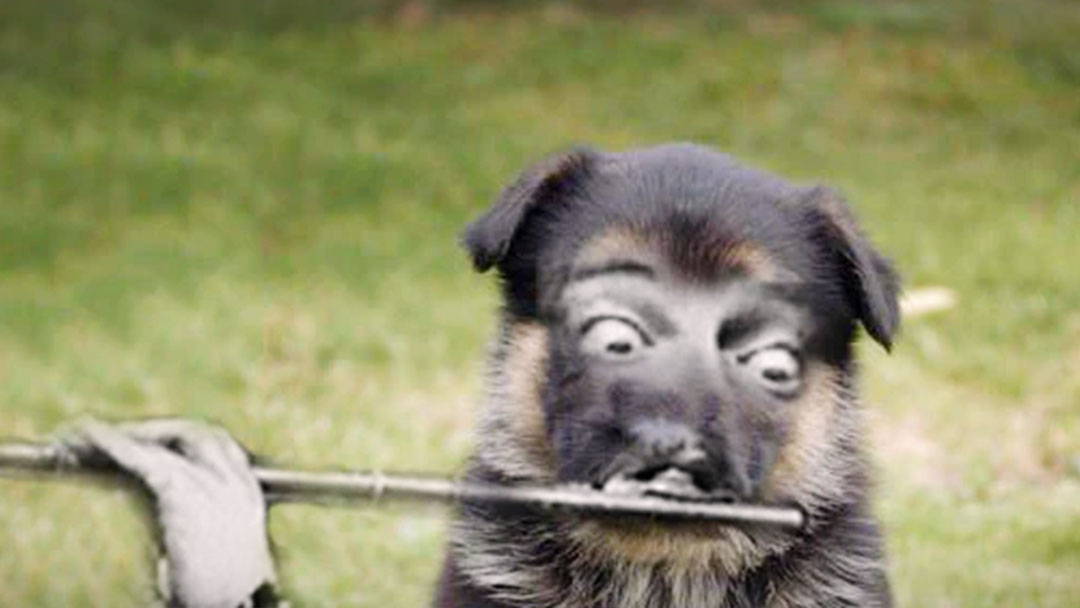
German Shepherd puppy who listened to Jethro Tull for the first 8 weeks of his life
Weaning is going nicely. Pippi is definitely interested in spending less time feeding them, and we've got them eating a slurry of goat milk and lean ground venison, so everyone's happy.
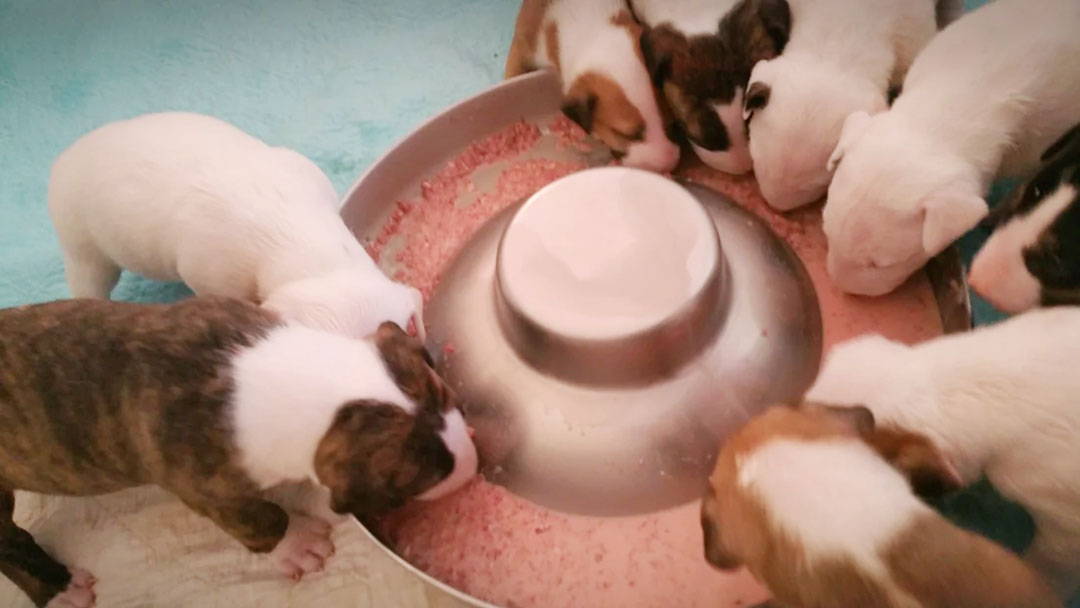
Digging in the raw goat milk and raw venison slurry. It smells exactly as awful as it sounds.
They started showing interest in lapping liquids a while ago, but psychologically it can be difficult for the puppies to take the leap and really start eating on their own. That nursing has deep emotional salience for them - it's not about food, it's about all the self-soothing that goes along with it. So we had some stubborn hold-outs who were crying instead of drinking. Here's a few tips if you run into that situation - obviously this assumes that your bitch is not interested in staying in the box with the puppies anymore, and that can vary HUGELY from bitch to bitch:
1. Put a dish of warmed milk in just before you let mom in to nurse. Give it a good 10-15 minutes before you let your bitch back in. Sometimes the whiners just get hungry enough and jump in.
2. Add a little sugar to the milk. I know, not the best for them, but they do love it and it can get them over the hump.
3. Because they want to nurse, you can offer the die-hard holdouts their cake and let them eat it, too. Offer them your finger to nurse on. Allow them get engrossed in nursing on your finger, then slowly lower your finger to the milk dish. Nine times out of ten, the puppy will be happy to lap the milk if you keep your finger resting next to their mouth. Seems to satisfy the emotional need to nurse, even though they're lapping.
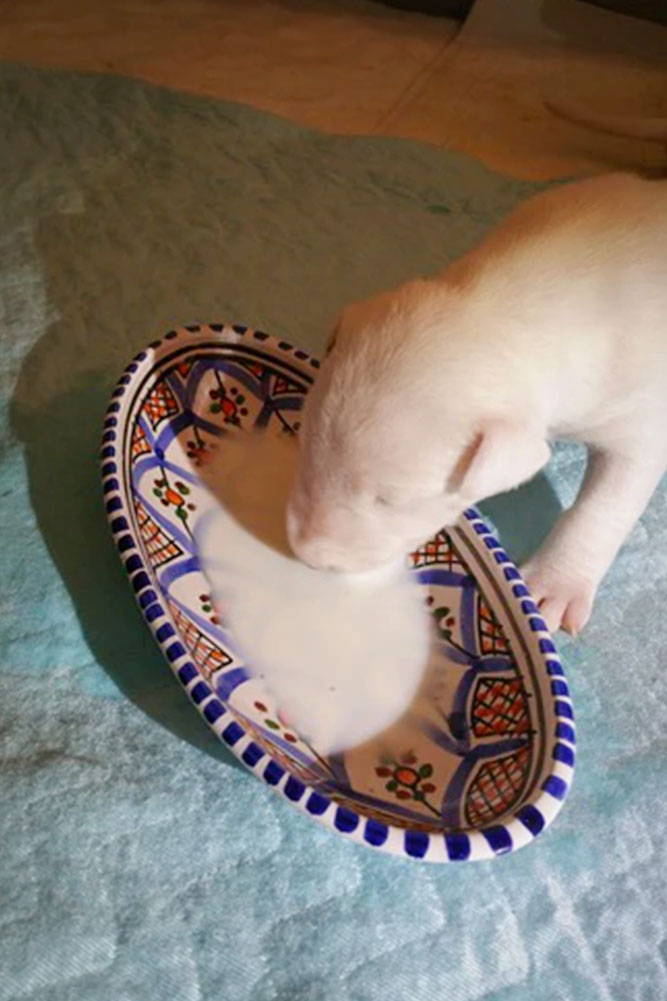
A little sugar added to the milk can convince the hold outs to take the plunge
They started showing interest in lapping liquids a while ago, but psychologically it can be difficult for the puppies to take the leap and really start eating on their own. That nursing has deep emotional salience for them - it's not about food, it's about all the self-soothing that goes along with it. So we had some stubborn hold-outs who were crying instead of drinking. Here's a few tips if you run into that situation - obviously this assumes that your bitch is not interested in staying in the box with the puppies anymore, and that can vary HUGELY from bitch to bitch:
1. Put a dish of warmed milk in just before you let mom in to nurse. Give it a good 10-15 minutes before you let your bitch back in. Sometimes the whiners just get hungry enough and jump in.
2. Add a little sugar to the milk. I know, not the best for them, but they do love it and it can get them over the hump.
3. Because they want to nurse, you can offer the die-hard holdouts their cake and let them eat it, too. Offer them your finger to nurse on. Allow them get engrossed in nursing on your finger, then slowly lower your finger to the milk dish. Nine times out of ten, the puppy will be happy to lap the milk if you keep your finger resting next to their mouth. Seems to satisfy the emotional need to nurse, even though they're lapping.
Just to clarify, Pippi will still feed them occasionally for the next week or so, but by next week she'll be about done with those sharp teeth on her teats. At this point she's very happy to tool around outside for 10-15 minutes at a time before she needs to go in and check on the puppies. She won't get in the box - she just sticks her head over the side, stirs everyone up, and then walks away, which is not helpful. Soon, the other adults in the house will be taking over raising the puppies. The "Nannies/Nanoes"can hear and smell the puppies in the puppy room and they've started trying to sneak in... good times, ahead :o).
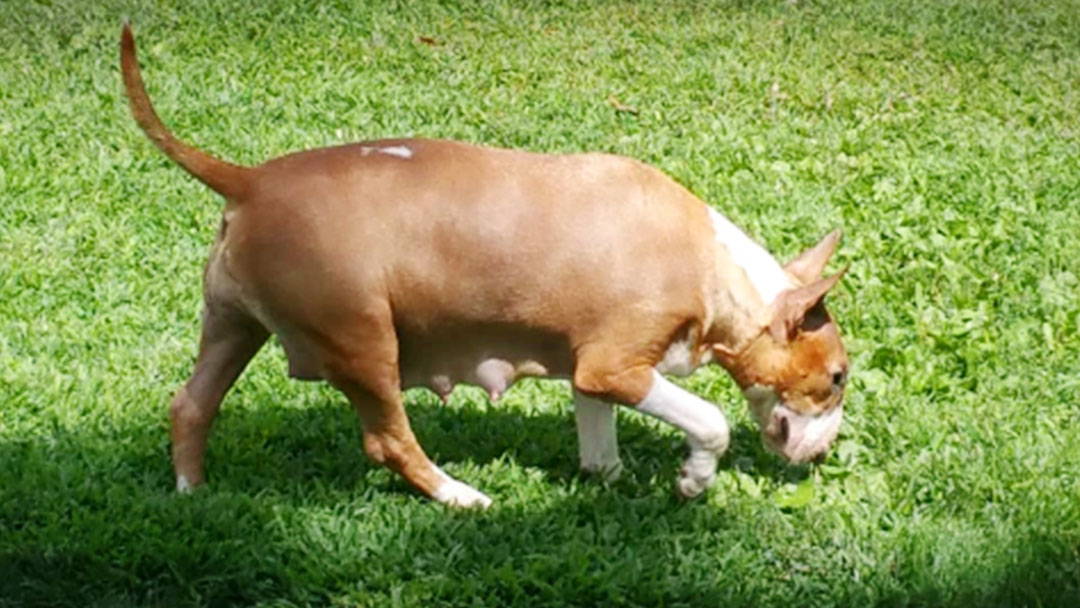
Pippi, enjoying some "me" time in the backyard. She's lost a lot of coat but overall maintained very good condition. At this point she's very happy to tool around outside for 10-15 minutes at a time before she needs to go in and check on the puppies. She won't get in the box - she just sticks her head over the side, stirs everyone up, and then walks away, which is not helpful
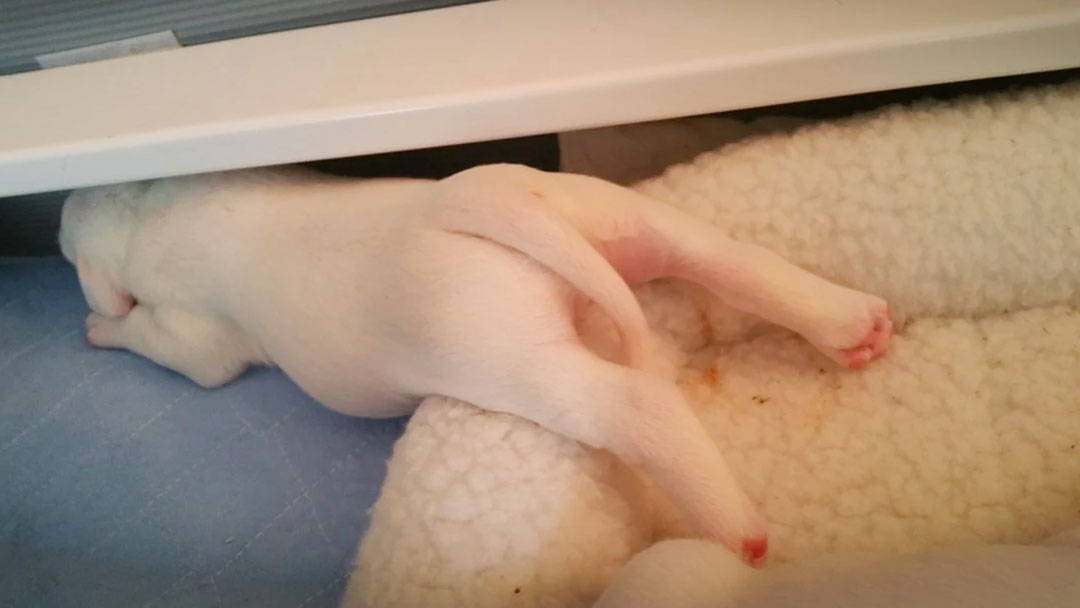
She swears it's comfortable

This article was originally updated on puppyculture.com in 2015
For further information about the studies mentioned in this article
Behavioral Effects of Auditory Stimulation on Kenneled Dogs.
Kogan, L. R., Schoenfeld-Tacher, R., & Simon, A. A.(2012). Journal of Veterinary Behavior: Clinical Applications and Research, 7(5), 268-275.
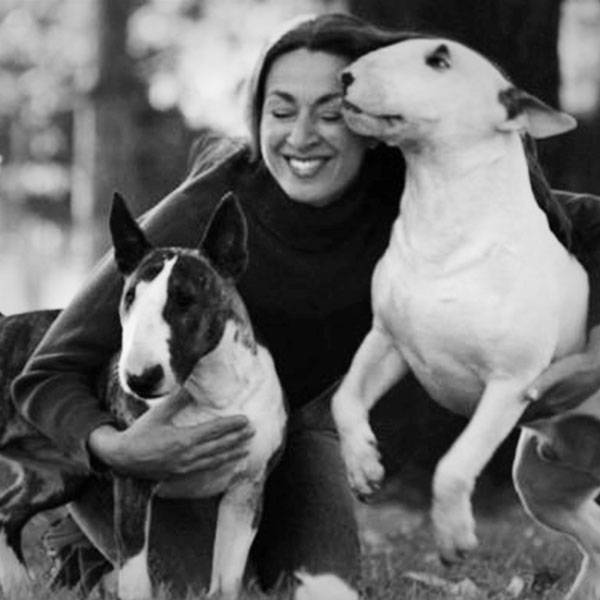
About the Author
Jane Messineo Lindquist (Killion) is the director of "Puppy Culture the Powerful First Twelve Weeks That Can Shape Your Puppies' Future" as well as the author of "When Pigs Fly: Training Success With Impossible Dogs" and founder of Madcap University.
Jane has had Bull Terriers since 1982 and she and her husband, Mark Lindquist, breed Bull Terriers under the Madcap kennel name.
Her interests include dog shows, dog agility, gardening, and any cocktail that involves an infused simple syrup.

